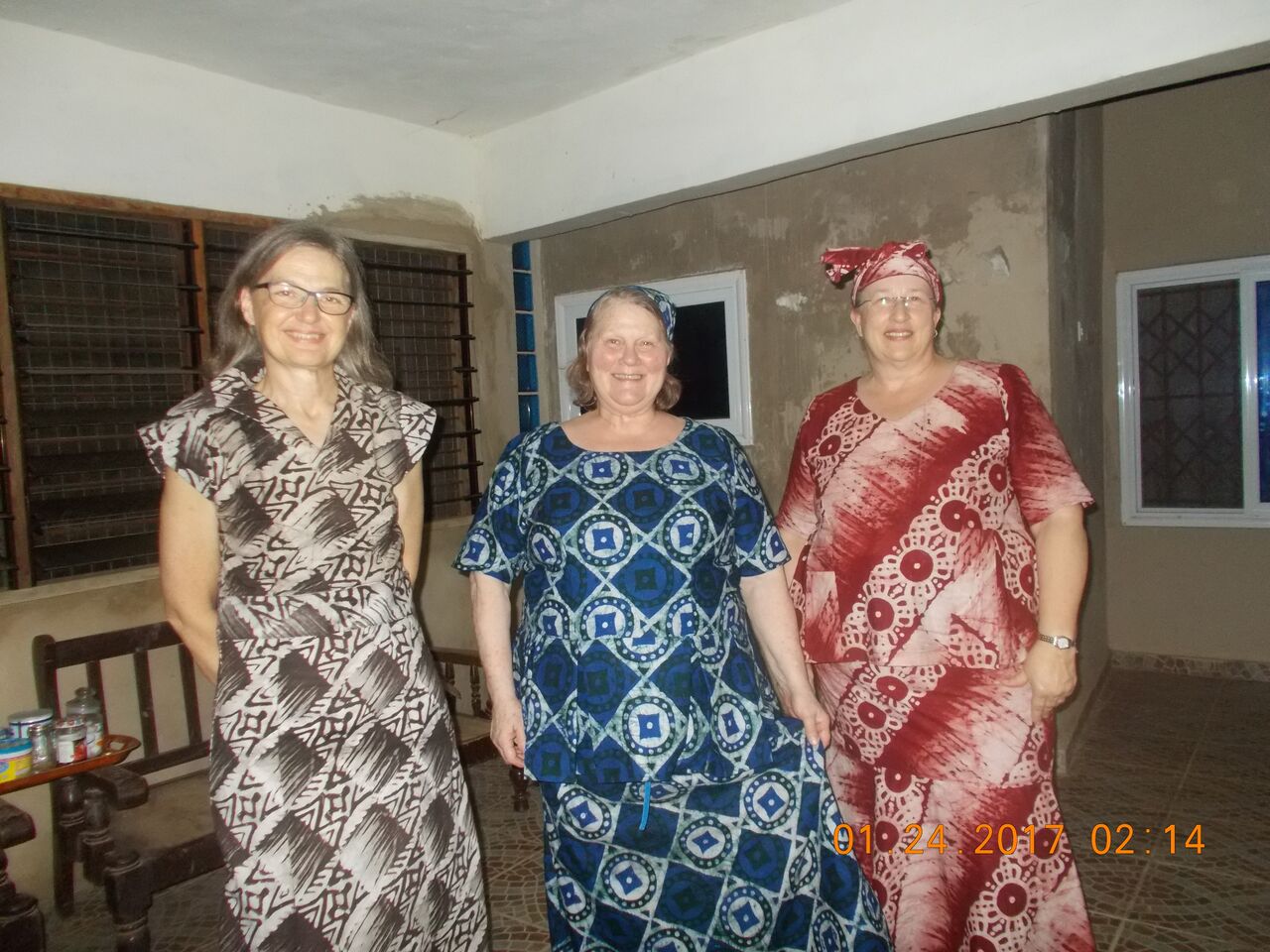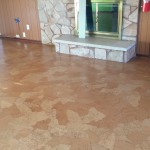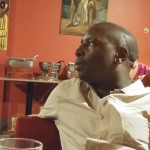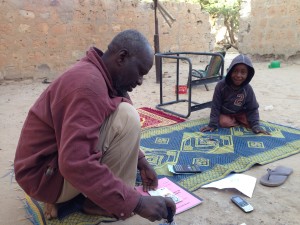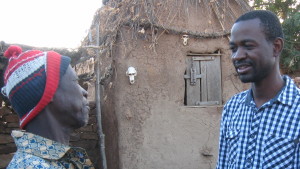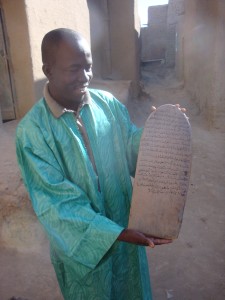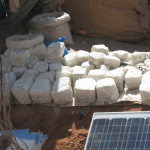And of course there’s much to do for fun and much to do for tradition. I’ll be posting slides of my travels to Northern Europe in September. And perhaps I can round up my pictures from two trips to Hawaii — one last year and one in about 2014? Plus the new dog, outings with Will, and the ever present involvement with Eastrose UU. You can see their website at eastrose.org and enjoy the fruits of my labors there. Yes, Amateur with a capital A, I know.
Well, this got serious all of a sudden!
Not only this website, but now I have roles on Eastrose.org (webmaster aka digital goddess) and participating in Lyceumoftrees.org in various capacities. I always need to be learning something new, and this seems to be the current opportunity for learning.
My goals for the eastrose site are to stick with wordpress and the UUA theme without doing any custom code, and to keep the information current and alive.
So these digital opportunities come with Facebook responsibilities, too. Oh Joy!
What did I used to do for a day job? I can hardly remember!
Related Images:
OMG – has it been that long?
So much has happened. The biggest is the arrival of a guy named Will in my life, and then the dog Lucy. Combining households, camping, traveling to Africa again, and working as a volunteer at my church implementing the PowerChurch accounting system and entering 2015 and 2016 data.
Goals *+*+*+*+*+*+*+*+*+*+
1: make a market link on this website so you can see and buy the jewelry and art that I’ve got in my collection.
2: To make links to the groups I am part of now — Oregon Power and Light, Lyceum of Trees, Eastrose, and Nadaka Park.
3: To become adept at word press while I assist Eastrose in updating and keeping their website current.
4: CAMPING in my new Tin Tent! 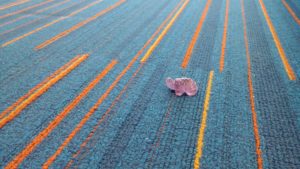
Related Images:
Who are the bad guys in Mali?
The Tuareg “rebels” have once again signed a peace agreement with the Malian government in Bamako. I would be oversimplifying and an armchair quarterback if I pretended to be an expert on the “bad times” in Mali.
However, (you knew that was coming!) I am reminded of playing “Risk” and ganging up on the loser to shorten the game. I hope that with this agreement the good guys can gang up on the terrorists and rebuild the Mali that is famous for friendliness, tolerance and hospitality. Perhaps the establishment/government of Mali can send some resources north to help the northerners feel the attachment to the nation. Sometimes “golden handcuffs” can be helpful to unify the nation, instead of all the riches staying in the south.
Rebuilding the road to Timbuktu would be a great symbol of caring and concern now that “Team Mali” is forming up again. If the road and the airport were back in use by mere mortals, the next step? Restore the Festival in the Desert!! Please!
Related Images:
Chalk. Just chalk.
We have so much: public schools financed by tax money, roads with bike lanes, clean air, extremely clean and tasty water out of the tap and electricity at the flip of a switch.Sewer systems and flushing toilets.Hot water from the tap and hot showers. Neighbors we can trust. Relatively smooth highways without bandits or land mines.How about air conditioning? So try to understand a city school that uses unexpected money to buy chalk. Just chalk.
The original plan was to send some money to Timbuktu to help the school buy books — whatever books the professors thought would best serve what they need to teach. Buy the books locally, keep them in the library for long-term benefit.
In no way could I imagine a school so poor that the most urgent need was for chalk.
UPDATE June 23: I’m still processing the chalk instead of books feelings. Part of our sales pitch was that the books would be in the library for long term use, and chalk is a consumable supply item. I struggle with how my own ego was tied to the long term use of our gifts, yet I remain committed to local control and freely given gifts.
As I understand it, Mali has public schools but they are locally financed — in good times a system that pretty much works. Parents have to pay for their children to attend public school with a monthly or weekly tuition. So far so good. Until there are no jobs, no government support, and no tourist spending.
Timbuktu continues to struggle from the unrest in northern Mali. It means that people flee the town for safety. One estimate is that an additional 50,000 people fled the economic and political threats in northern Mali — just in May, 2015.The tourist trade, a decades-long pipeline of money into the region, has tanked.
Another report explains that the local village markets only have the village’s own goods for sale. It is too dangerous for merchants to travel to the next larger town for supplies that only come from the city. Then local farmers and artisans are too frightened to bring even their local goods to the market.
Talk about a cultural and economic death spiral.
So as I go about my blessed life I try not to forget the difficulty and suffering of others who, through no fault of their own, find themselves caught in a web of terrorism and fear. Thankfully, even in the face of those threats, good people continue to educate children and find creative ways to buy chalk for the local school.
Related Images:
Reality again . . .
The glow of new adventures is fading, but not gone. There’s been a paper bag floor at the house the church owns, the chart of accounts for the church finances, church personnel contracts, and getting ready to be church treasurer with a fully implemented finance program still about a month off.
The paper bag floor —
it turned out B – E – A – U – T – I – F – U – L – !
It’s a tough project, that finance stuff. I hope by the next budget cycle (October, 2015) that the software will be smoothly functioning. I didn’t realize that membership, contributions, and a bunch of other data besides the money part will have to be set up in tandem. It is lots more fun to do other stuff than focus on the chart of accounts, but I DID promise to do it!
The hardest part is that this finance project feels just like my old job . . . I’m SUPPOSED to be retired, eh? And yet, I can work on it at my own pace and not worry so much about getting fired!
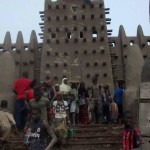
The great mosque in Djenne — the largest mud building in the world gets a new coat of mud this month. It takes the whole city to get it done!
We did our Timbuktu and Back worship service at the end of March. It was so well received that we’re doing a West African dinner and the show — in October — a fundraiser for the church. Talked to Mamadou today and they are spending the second Sunday in a row putting mud on the mosque in Djenne. It is great to keep in touch with the new friends from Mali. I got to meet Vieux Farka Toure on Monday night — he played a concert at the Melody Ballroom after he visited at the Ko-Falen dinner at the Queen of Sheba restaurant. Such an exciting evening.
Related Images:
Mali and Facebook? Who knew?
More about our tour with Mali Mystere:
The postcards from Timbuktu arrived this week. I wrote one to a friend in January and shed a tear then, as I shed a tear now, for her support to encourage me to follow my dreams. Little did I know that the trip of a lifetime would stick with me in so many tenacious ways.
So, Aly Dicko of Timbuktu is on Facebook and we were actually chatting in real time a few days ago. Do you know how weird that is? With the 8 hour difference to Mali, and the long waits between emails all summer, it was a bit disconcerting! But then, he was in Europe, too. I suspect the internet connections might be a wee bit speedier in Europe than in his hometown?
Then, Mamadou Diawara from Djenne is still in touch too. I’ve been sending him pictures as I find them. Here he is showing us a tablet from the Quran school in Djenne.
When I went to Germany with Sally and Carrie — we shared the memories among ourselves and our friends for many years. But we didn’t leave friends behind in Germany or worry about particular Germans we had met. This is entirely different. We met Aly and Mamadou in their homes and home towns, and saw the difficulties their country has survived and continues to have. We heard their stories, teased and got teased back, played with new languages and (sometimes just as entertaining) experienced new cultural norms. Since our friends were hesitant about our trip, it was easy to notice the tourist infrastructure in Mali that was more than a bit short of tourists. We who have social media at our fingertips can at least do reviews, post pictures and connect in social media ways that might help Aly and Mamadou be more successful.
And the music. There was laughter about listening to “the soundtrack to Timbuktu” for the whole trip. I finally heard Tracy Chapman’s lyrics and Bob Marley is Universal, isn’t he? Aly had quite a collection of music on that USB flash drive. We asked him for the list of artists, but of course I didn’t get the actual albums or songs, so I’m on this quest for Malian music that is utterly absorbing. The Limelighters had a song about a woman completely besotted with Russian fashion and music. In part: “A-Yee A-Yee, she wears a Cossack blouse, she dances wildly all around the house, tomorrow morning they will find me dead, she even wears her Cossack boots in bed!” If I could only adjust that Russian reference so the song would be about Mali! Kathie heard me sing the Limelighters version while we were still traveling, probably in the middle of the trip, when I was most thrilled to be in Africa, especially Mali.
Portland had the movie “Timbuktu” showing in the Portland International Film Festival and Kathie and I saw it last weekend. We remarked how glad we were that we had actually been to the desert before we saw the movie. (It was showing in Brussels over Christmas, we almost saw it there.) The movie is astounding and I hope it wins the Oscar for Best Foreign Film next weekend. The tents, the cattle and the river, and the central themes of love and the desire for peace — a beautifully crafted story filmed in Mauritania because Timbuktu was pretty shaky at the time. If you have a chance to see it, you should. The dust, the acacia trees, the desert . . . they are almost characters in the film too.
At the same time Portland is hosting the 25th Annual Cascade Festival of African Films running through the beginning of March. I’ll be trying to connect with some of those free showings, too. Maybe I can get a good recipe for Ginger Juice while I’m there!
Related Images:
Seeing the world through new eyes . . .
I know the world has changed but I can’t put my finger on exactly what has changed for me. Traveling does that, I guess. Mali is one of the poorest countries in the world. Per capita annual income is like $620 per year. I think I heard that 25% of the government’s budget comes from foreign aid. They are just coming out of a state of seige from the incursion of sharia law extremists in the north. I was fascinated by Timbuktu since my buddy Thom had photos and stories about hitchhiking from Timbuktu to Alexandria in the 70s after his peace corps assignment in Cameroon.
But it was so much FUN to be there. Aly Dicko, our guide, was knowledgeable and provided a recurring sense of humor even when things were a bit harsh for this city girl. (There was the evening he asked questions and wanted me to answer in French . . . much hilarity, that.) As the journey unfolded I realized just how risky such a trip is. Right down to the tap water in the capitol city Bamako. Everywhere we went, we were welcomed. There is so much empty tourist infrastructure it felt almost strange just to be a tourist at all.
Maybe in another year I’ll put my finger on what made this such a powerful experience. In the meantime, I’ll keep adding little bits to the web page to share the experience.
Related Images:
Brussels, Bamako, and Beyond

I was making a face for the camera at the time, but at the moment it is more like how I feel about this trip!
So today I found a foreign language collection of tapes for the widespread Maliian language Bambara. (Maybe I can leave the French to Kathie?) And I’ve survived the yellow fever vaccination reaction, and my passport has the Mali Visa ready to go. More and more it feels like a real trip. When I visit with people who have travelled to Africa, they are glad for us going to Brussels for a few days first. That means we’ll have a chance to adjust to the time zone change before we land in the capitol city Bamako for the 16-day tour.
Brussels at Christmas should be a destination all by itself though. Chocolate and lace, beer and old Europe, altogether a great start. I found an apartment very close to the Grand Place and with a kitchen we don’t have to eat out all the time. Might have a side trip to Bruges or anywhere else, and we have to make our way to Charles de Gaulle airport to fly to Africa.
Here’s the tour itinerary:
Mali Mystere 16-day tour : From the River to the Desert
Bamako, Djenné, Dogon country, Mopti, Niger River, Tombouctou and the desert, Ségou, Bamako.
Day 1: Saturday – Bamako
Upon arrival at the airport in Bamako , your guide is there to welcome you and accompany you to dinner. Overnight at the hotel Tamana.**
Day 2: Sunday – Bamako to Djenné
Morning departure from Bamako to Djenné via an air-conditioned 4×4. We will pass beautiful mud villages and meet with villagers who will explain the tradition of millet and the traditional costumes made from bazin. Lunch en route. Dinner and overnight at an encampment/hotel.** You will enjoy breakfast in the lovely shaded terraces.
Day 3: Monday – Djenné
Morning tour of the city and its rich history, with the largest and most beautiful mud mosque in Africa and the world. Monday is the day of the colorful weekly market, where you can find lovely traditional fabrics. You will walk through the narrow alleys to explore the majestic Sudanese-style mud buildings. Behind each door a warm welcome awaits you. Djenné is the ideal setting to enjoy the great variety of ethnic groups that inhabit the Niger River Valley and the inland delta. Lunch in a local restaurant; the afternoon is free to enjoy the market; dinner and overnight at an encampment/hotel.**
Days 4 – 7: Tuesday to Friday – Dogon Country
Morning departure for Dogon country via the Bandiagara cliffs. Lunch en route. Change of scenery for 4 days, amid Dogon villages with their unique cultures and long-held traditions.
Hike along the cliffs to meet the villagers and ancient dwellings of“Tellems.”?You will discover the Dogon traditions of weaving cotton to make bogolan (mud cloth) as well as carving wooden masks and fertility statues. Each village hosts its Tougouna, a place of exchange that welcomes all village elders, called the “house of words.” Discover Dogon cliffs, plateaus and plains through trekking. Nights are spent in safe, comfortable encampments in the village.
On the seventh day, we return to the 4×4 and depart for Mopti.
Guided tour after lunch: the crossroads of trade on the Niger River. Observe dugout canoes and pinasses being built. You will be surprised by the elegance and unique colors of each pinasse; this is how the city of Mopti gained the prestigious name “the Venice of Mali.” Dinner and overnight at the hotel “Ya Pas de Problème” [the quaintly named, There is no Problem Hotel]**. Do not deprive yourself of capitaine skewers, a succulent white fish and local Mopti specialty!
Days 8: Mopti – Tombouctou by Pinasse
Morning departure via a fully equipped, motorized pinnase along the Niger River . Three days and two nights to experience the tranquility of the river:?meeting Bozo fishermen, visiting villages and witnessing the smoking of fish, roaming livestock, and petty trade; crossing Mali ’s largest lake, ” Lake Debo ” where many species of migratory birds reunite; and swimming with our friends the hippos! Every night at sunset, we reach beautiful places to camp along the riverbanks in complete safety. Somehow the river will make you work up quite an appetite for fresh-caught fish, eaten sitting around the campfire under a brilliant sky of stars.
On the tenth day, arrive in Tombouctou in the afternoon and overnight at the hotel Ya Ka Seme or Colombe **.
Day 11: Tuesday – Tombouctou
Morning tour with a historian who will unveil the rich cultures and traditions of this most famous, mysterious city. Discover its mosques, the center of 16th century manuscripts, the houses of early explorers, the museum, the traditional spice market, and witness the creation of handicrafts and silver jewelry. During lunch with a Tombouctou family, (Note: someone on trip advisor says this is our tour guide’s mother!) you will taste a local specialty with 12 spices. In the afternoon, depart for a camel ride in the desert. You can savor the beauty and total silence of the desert. Meet my friends the Tuaregs and their leader Ibrahim who will tell you the legends of the Sahara under a star-studded night sky by the fire. We will partake in traditional Tuareg meals and tea, and spend the night under the dazzling stars or in a Tuareg tent.
Day 12: Wednesday – Tombouctou
Return to Tombouctou by camel; free afternoon in the city of 333 saints.
Dinner and overnight at the hotel Ya Ka Seme or Colombe**.
Day 13: Thursday – Tombouctou to Mopti
Morning departure by air-conditioned 4×4 where you will have the pleasure to enjoy magnificent scenery.
Picnic en route. Arrive Mopti in the early afternoon. Dinner and overnight at the hotel “Ya Pas de Problème.”**
Day 14: Friday – Mopti to Ségou
Morning departure to Ségou. You will marvel at the giant, luxurious baobab trees lining the roads, as well as Bambara and Bobo villages. We will stop briefly to admire the mosque in San. Arrive Segou in the mid-afternoon; dinner and overnight at the hotel Esplanade.**
Day 15: Saturday – Ségou to Bamako
In a morning tour of Ségou, you will have the opportunity to discover the pottery made by a cooperative of women in the market, and the dye house where everyone can paint a bogolan. Lunch on the restaurant then depart for Bamako for 3h30min drive; enjoy the afternoon at leisure; dinner is at a local restaurant. Overnight at the hotel Tamana**
Day 16: Sunday – Bamako
Morning tour of the city: the home of artisans, the market with fruit and spices, the National Museum. Lunch is at a restaurant; the afternoon is at leisure; finally, transfer to the airport with the help of your guide.
(Note: somewhere else indicates the ** have a meaning about the lodgings. Mostly that a 5 star “western style” hotel is out of the question, that the best lodgings in Mali would be more rustic, or words to that effect.)
For the 16-days tour: The cost: 1940 Euros
Included:
The rental of a the car and driver throughout the stay;
The fuel,
The pinasse (boat) rental;
Overnight stays in hotels and encampments
Three complete meals per day for the entire trip;
Tourist taxes; hotel taxes; the accompanying guide
Not included:
The international flight, drinks
Responsible travel: Cultural tour of Mali
Community
We work hard to ensure positive impacts to the local communities and surroundings that we encounter, and encourage travellers to contribute items that are inexpensive and easy to pack, such as pens for schoolchildren and recycled clothing.
Our group sizes typically range from 5 to 9 people, which we believe minimizes impact to the environment and allows our travellers to gain more insight into their surroundings through more individual attention from our guides. We derive ultimate satisfaction from teaching our guests about Malian culture and keeping our traditions and heritage alive through carefully-planned, sustainable, developing tourism.
We employ 100% local guides, drivers and cooks. Guides are selected who already have special knowledge about the areas they will introduce to tourists, have numerous local contacts, and constantly seek to increase their knowledge and have a passion for teaching tourists about their environments. With visits to local fruit and spice markets, a local women’s cooperative selling pottery & eating in local restaurants, this trip helps to stimulate the local economy.
Environment
In Mali, key tourist destinations are spread far throughout the country, and we plan tours carefully so as to maximise ride sharing. We make sure to arrange transport that accommodates maximum capacity while still maintaining comfort for our guests. Mineral water is safest for tourists and we always offer empty bottles to children and adults along our journeys who will continue a long cycle of re-use for the bottles. Mali currently is working to reduce large amounts of plastic bags that are not properly disposed of throughout the land, and travellers are quickly made aware of this and encouraged to individually do their part to dispose of any waste in designated facilities.
Related Images:
What’s this Net Neutrality thing?
So, this web site is sort of a playground right now. The swings are up, and there is some sawdust on the ground. I hope to make it a more robust site, possibly using it to FTP files to my freelance customers, maybe do a little private selling of jewelry and art, perhaps posting my photo collections in some organized fashion.
Just recently, I managed to upgrade my internet access to “real” internet, not the Verizon piggyback Jet Pack. It’s great to get unlimited internet access at a reasonable monthly cost. Now that I’m semi-retired, it is also great to get services like Netflix and YouTube without paying very much more.
The point is that the internet is a tool in my toolbox to help me make a living and communicate with people and businesses. In my neighborhood, the internet access is already a utility. I hope that the FCC hearings produce a set of rules with wisdom and preserves the ease of access to the internet we now have. You can support net neutrality by sending your comments to the FCC at this email address: openinternet@fcc.gov
The FCC is posting over 1 million comments received in a gigantic data “dump” for research and analysis. Anything you send to them will remain part of the public record. Just cuz we can’t seem to get anything useful from the House of Representatives doesn’t mean we cannot share our thoughts with the FCC! Of course, calling or writing your congress person works, too!
Net Neutrality completely leaves out those who are economically unable to afford a computer and wireless service. Or at least a smartphone — although it’s very difficult to apply for a job on a smartphone. My neighborhood has so many people newly arrived in the US and working so hard to get by. I have to remind myself that people don’t always live and work on the internet.
Leaving my soapbox now. ‘Bye!

